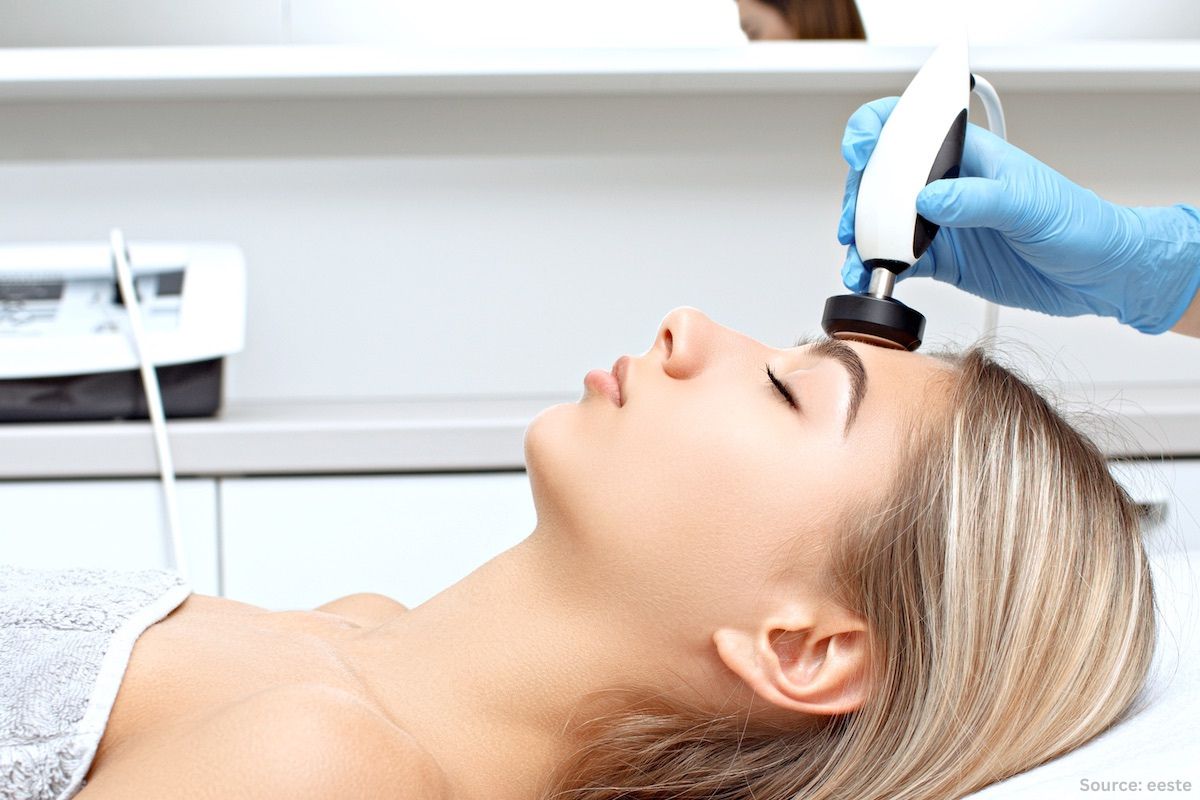
Organic Personal Care Ingredients Market by Product Type (Skin Care, Haircare, Oral Care, Bath & Body Care, and Others), by Ingredient Type (Plant Based, and Others), by Plant Type (Aloevera and Others), by Application (Cleansing, and Others), by Distribution Channels (Online, and Offline (Supermarkets/Hypermarkets, Department Stores, Beauty Stores, and Pharmacies & Drug Stores)), and by End Users (Men, Women, and Children) – Global Opportunity Analysis and Industry Forecast, 2025-2030
US Tariff Impact on Organic Personal Care Ingredients Market
Trump Tariffs Are Reshaping Global Business
Organic Personal Care Ingredients Industry Overview
The global Organic Personal Care Ingredients Market size was valued at USD 16.69 billion in 2024 and is expected to be valued at USD 17.98 billion by the end of 2025. The industry is predicted to reach USD 26.29 billion by 2030 with a CAGR of 7.9% from 2025 to 2030. The market is thriving due to a heightened consumer emphasis on natural and organic formulations, driven by growing concerns over the chemical composition of personal care products and their impact on health and the environment, as seen in the rising popularity of sustainable skincare and mainstream shifts toward chemical-free options by major retailers, alongside brands gaining prominence by catering to this demand in markets like India.
Additionally, escalating health consciousness is pushing consumers away from synthetic chemicals like parabens and phthalates toward plant-based, cruelty-free, and non-toxic alternatives, with the organic skincare segment leading and studies showing a positive correlation between health awareness and preference for these products. The increasing environmental consciousness further fuels growth, as consumers seek sustainably sourced, eco-friendly options with recyclable packaging, supported by brands that align with this movement.
However, a significant restraint in the organic personal care ingredients market is the ambiguity in terms like "natural" and "clean" due to the lack of uniform regulations, with no clear definitions from authorities and varying global certifications causing consumer confusion. On the opportunity front, technological innovations such as nanofibers are enhancing product efficacy and stability, boosting skin hydration and enabling targeted ingredient delivery, promising to redefine beauty standards with effective, eco-friendly solutions.
Heightened Consumer Emphasis on Natural and Organic Formulations Drives the Market Growth
A primary driver of the organic personal care ingredients market growth is the increasing consumer demand for products formulated with natural and organic ingredients. According to the Environmental Working Group, the average person applies nine personal care products daily, containing an average of 126 unique ingredients, prompting consumers to seek safer alternatives. This trend is reflected in the rising search volume for "sustainable skincare", which has increased by 100% in the past five years. Dozens of beauty brands are responding to this market trend by creating sustainable, natural, and organic products.
For example, Walmart has launched a "clean beauty shop" offering 900 products free from specific ingredients, indicating a mainstream shift towards accommodating consumer values. This preference is also evident in India, where 71% of consumers surveyed indicated a preference for natural beauty products over synthetic ones. Brands like Mamaearth focus on toxin-free, natural products, achieving unicorn status and highlighting the potential of catering to this demand.
Growing Health Consciousness and Awareness of Harmful Chemicals Boosts the Growth of the Market
Another significant driver is the escalating health consciousness among consumers regarding the potential adverse effects of synthetic chemicals commonly found in conventional personal care products. Ingredients such as parabens, sulfates, phthalates, and formaldehyde are raising concerns due to their potential link to health issues. This awareness is propelling consumers towards organic personal care products made with plant-based ingredients, which are often perceived as cruelty-free, non-toxic, non-GMO, and non-comedogenic.
The organic personal care market revenue was valued at INR 50.67 Bn in FY 2023 in India, with the organic skincare segment dominating. A study on customer attitudes towards organic personal care products found that health consciousness positively influences the attitude towards buying such products. Consumers who are more conscious about their health tend to have a positive attitude towards organic personal care products, seeking out options that are less harmful and free of toxic substances.
Increasing Environmental Consciousness and Demand for Sustainable Practices
The growing environmental consciousness and the desire for sustainable and eco-friendly options are also crucial drivers for the organic personal care ingredients market demand. Consumers are increasingly aware of the environmental impact of synthetic ingredients and are seeking alternatives that are produced and packaged responsibly.
Organic farming practices, which avoid chemical pesticides and fertilizers, are perceived as less harmful to the environment and promote biodiversity. Many consumers are now considering the entire life cycle of a product, including packaging, and are looking for recyclable and biodegradable options. Brands like Forest Essentials in India emphasize sustainable sourcing of ingredients and eco-friendly packaging, aligning with this global movement. The customer attitude towards organic personal care products also revealed that environmental consciousness positively influences consumers' attitudes towards these products.
Ambiguity in Definitions and Lack of Uniform Regulations Restrain the Market Expansion
A notable restraint in the organic personal care market expansion is the ambiguity surrounding terms like "natural" and "clean" and the lack of uniform regulatory standards. The U.S. Food and Drug Administration (FDA) does not have a set standard or definition for "natural" or "clean" skincare products, and there is no requirement for companies to prove their products are as claimed.
While the term "organic" is more regulated, particularly with the USDA Organic Seal requiring at least 95% organic agricultural ingredients, the varying definitions and certifications globally can create confusion for consumers. This lack of clarity makes it challenging for consumers to identify truly organic and chemical-free products amidst marketing claims.
Integration of Nanofibers in Organic Ingredients Creates Future Growth Opportunities for Market Growth
Technological innovations present significant opportunities for the organic personal care ingredients market trends. For instance, the integration of nanofibers with organic ingredients is emerging as a way to improve the bioavailability and stability of natural ingredients. Research indicates that skincare products infused with nanofibers can lead to a 60% increase in skin hydration compared to traditional counterparts.
Nanofibers can also enhance the penetration of active ingredients, extend the shelf life of organic cosmetics by acting as natural preservatives, and enable targeted delivery of ingredients for specific skin concerns. This synergy between nanotechnology and organic compounds has the potential to redefine beauty standards and address consumer demands for highly effective and eco-friendly products.
Market Segmentations and Scope of the Study
The organic personal care ingredients market report is segmented on the basis of product type, ingredient type, plant type, application, distribution channels, end users, and region. On the basis of product type, the market is divided into skin care, hair care, oral care, bath & body care, cosmetics/makeup moisturizers, and fragrances. Skin care is further divided into cleansers, toners, serums, face masks, and sunscreens. Hair care is further divided into shampoos, conditioners, hair oils, hair masks, and hair colorants. Oral Care is further segmented into toothpaste and mouthwash. Bath & body care is divided into soaps, body washes, body lotions, and body scrubs. Cosmetics/makeup is further divided into foundation, lipsticks, mascaras, and eyeliners. Fragrances are divided into organic perfumes and essential oils. On the basis of ingredient type, the market is classified into plant-based, vegetable-based, animal-based, mineral-based, natural oils, and others. On the basis of plant type, the market is divided into aloe vera, avocado, rose, lavender, jojoba, neem, and other natural ingredients. On the basis of application, the market is divided into cleansing, exfoliation, moisturization, UV protection, anti-ageing, multi-functional, and others. On the basis of distribution channels, the market is segmented into online and offline. Offline is further segmented into supermarkets/hypermarkets, department stores, beauty stores, pharmacies & drug stores. On the basis of end users, the market is segmented into men, women, and children. Regional breakdown and analysis of each of the aforesaid segments include regions comprising North America, Europe, Asia-Pacific, and RoW.
Geographical Analysis
In North America, the beauty industry has experienced significant retail growth, largely fueled by increasing consumer awareness around ingredient transparency and sustainability. The growing popularity of “clean beauty” is pushing brands to adopt organic personal care ingredients, as consumers show a strong preference for products free from harmful additives and synthetic components.
Europe follows a similar trajectory, with consumers becoming more conscious of health and environmental impact. The demand for organic and sustainable cosmetic products is supported by clear labeling systems and stringent certification standards. This well-informed consumer base continues to encourage the development and adoption of organically formulated personal care products.
Across the Asia–Pacific region, there is strong and steady growth in the beauty and personal care sector. Within this region, India stands out with a rising demand for natural and herbal beauty products. Consumers are increasingly willing to invest in products that are plant-based, toxin-free, and derived from traditional ingredients. The success of homegrown brands catering to these preferences has further accelerated the shift toward organic personal care offerings. China’s beauty market is evolving at a more measured pace, yet the appetite for natural cosmetics remains substantial. While recent growth has been modest, the market continues to benefit from a large and diverse consumer base that is gradually shifting its focus toward safer and more eco-conscious formulations.
In the Rest of the World, particularly in regions like the Middle East, Africa, and Latin America, growth in the beauty sector has exceeded expectations. Much of this expansion is driven by a rising interest in premium, high-quality personal care products. As consumer preferences evolve, there is an emerging demand for formulations that emphasize natural ingredients and health-conscious benefits.
Overall, the global beauty and personal care industry is witnessing a dynamic transformation, with organic and natural product categories gaining traction across nearly all regions. For ingredient suppliers and brands alike, this shift underscores the need to tailor strategies that resonate with local values, preferences, and regulatory environments, ensuring relevance and long-term growth in a rapidly changing organic personal care ingredients market.
Strategic Analysis of the Companies Operating in the Market
Key players in the global organic personal care ingredients industry are strategically adapting to evolving consumer demands for natural, sustainable, and chemical-free beauty products. Recent developments include a significant push towards innovation in naturally derived actives, exemplified by the exploration of ingredients that stimulate endogenous regeneration like NAD+, showcasing a move beyond traditional botanical extracts.
Companies are also investing in technologies like nanofibers to enhance the bioavailability and stability of organic ingredients, potentially improving product efficacy and extending shelf life. For instance, research indicates that nanofiber-infused skincare can lead to a 60% increase in skin hydration. A crucial strategy involves strengthening supply chains for certified organic raw materials and ensuring transparent sourcing, often highlighted in brand narratives.
Furthermore, collaborations and acquisitions are becoming more frequent, with larger entities like BASF enhancing their market presence in the U.S. personal care market through sole distributor agreements that include organic suppliers. Challenges persist around the definition of "organic" and the need for greater regulatory clarity to prevent "greenwashing". Ensuring the cost-effectiveness of organic formulations while maintaining efficacy is another hurdle.
However, the opportunities are substantial, driven by a robust growth potential for the organic personal care ingredients market, with the global cosmetics sector expected to reach over USD 438 billion by 2026. The increasing consumer awareness of potential health concerns related to synthetic ingredients and a growing preference for eco-friendly alternatives continue to fuel demand for organic beauty ingredients, offering significant industry share expansion possibilities for ingredient suppliers who can innovate and build trust through transparency and demonstrable efficacy.
Key Benefits
-
The report provides quantitative analysis and estimations of the sector from 2025 to 2030, which assists in identifying the prevailing organic personal care ingredients market opportunities.
-
The study comprises a deep dive analysis of the current and future organic personal care ingredients market trends to depict prevalent investment pockets in the sector.
-
Information related to key drivers, restraints, and opportunities and their impact on the organic personal care ingredients industry is provided in the report.
-
The report provides a competitive analysis of the key players, along with their organic personal care ingredients market share.
-
SWOT analysis and Porter's Five Forces model are elaborated in the organic personal care ingredients market study.
-
Value chain analysis in the market study provides a clear picture of the roles of stakeholders.
Organic Personal Care Ingredients Market Key Segments
By Product Type
-
Skin Care
-
Moisturizers
-
Cleansers
-
Toners
-
Serums
-
Face Mask
-
Sunscreens
-
-
Haircare
-
Shampoos
-
Conditioners
-
Hair Oils
-
Hair Masks
-
Hair Colorants
-
-
Oral Care
-
Tooth Paste
-
Mouth Wash
-
-
Bath & Body Care
-
Soaps
-
Body Washes
-
Body Lotions
-
Body Scrubs
-
-
Cosmetics/Makeup
-
Foundation
-
Lipsticks
-
Mascaras
-
Eyeliners
-
-
Fragrances
-
Organic Perfumes
-
Essential Oils
-
By Ingredient Type
-
Plant Based
-
Vegetable Based
-
Animal Based
-
Mineral Based
-
Natural Oils
-
Others
By Plant Type
-
AloeVera
-
Avocado
-
Rose
-
Lavender
-
Jojoba
-
Neem
-
Others
By Application
-
Cleansing
-
Exfoliation
-
Moisturization
-
UV Protection
-
Anti-Ageing
-
Multi-Functional
-
Others
By Distribution Channels
-
Online
-
Offline
-
Supermarkets/Hypermarkets
-
Department Stores
-
Beauty Stores
-
Pharmacies & Drug Stores
-
By End Users
-
Men
-
Women
-
Children
By Region
-
North America
-
The U.S.
-
Canada
-
Mexico
-
-
Europe
-
The UK
-
Germany
-
France
-
Italy
-
Spain
-
Denmark
-
Netherlands
-
Finland
-
Sweden
-
Norway
-
Russia
-
Rest of Europe
-
-
Asia Pacific
-
China
-
Japan
-
India
-
South Korea
-
Australia
-
Indonesia
-
Singapore
-
Taiwan
-
Thailand
-
Rest of Asia Pacific
-
-
RoW
-
Latin America
-
Middle East
-
Africa
-
Key Players
-
Evonik Industries
-
Agrana Beteiligungs-AG
-
Galaxy Surfactants Ltd.
-
GatteFosse SAS
-
Lubrizol Corporation
-
Ashland, Inc.
-
Silab
-
Symrise AG
-
Vivimed Labs Ltd.
-
Lucas Meyer Cosmetics
-
International Flavors & Fragrances Inc.
-
Koninklijke DSM N.V.
REPORT SCOPE AND SEGMENTATION:
|
Parameters |
Details |
|
Market Size in 2024 |
USD 16.69 Billion |
|
Revenue Forecast in 2030 |
USD 26.29 Billion |
|
Growth Rate |
CAGR of 7.9% from 2025 to 2030 |
|
Analysis Period |
2024–2030 |
|
Base Year Considered |
2024 |
|
Forecast Period |
2025–2030 |
|
Market Size Estimation |
Billion (USD) |
|
Growth Factors |
|
|
Countries Covered |
28 |
|
Companies Profiled |
15 |
|
Market Share |
Available for 10 companies |
|
Customization Scope |
Free customization (equivalent up to 80 working hours of analysts) after purchase. Addition or alteration to country, regional, and segment scope. |
|
Pricing and Purchase Options |
Avail customized purchase options to meet your exact research needs. |

















 Speak to Our Analyst
Speak to Our Analyst





















